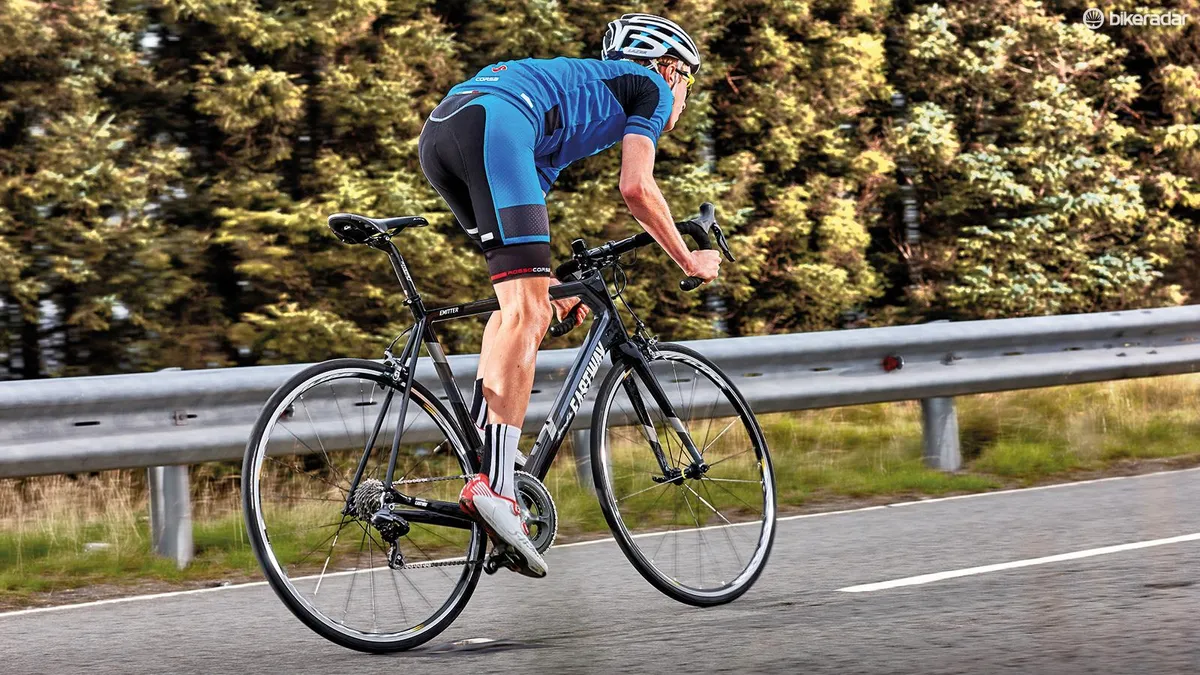Professional athletes are enthusiastic diary writers, and use them to record every detail of their training and racing. Everything from miles ridden to heart rates achieved to cereals eaten for breakfast is recorded. Once written down, this information can be used by the athlete, their coach and their sports scientist to see what they've done right, where they've messed up and, most importantly, to plan their next steps. It'll work for you, too.
A study of the training diaries of elite US marathoners who qualified for the 2004 Olympic trials showed that although their mileage, number of sessions per week and use of resistance training varied, all carried out between two thirds and three quarters of their weekly training at below race pace.
This mirrors data from other endurance sports such as skiing, rowing, running, swimming and cycling, and shows that consistent, race pace training doesn't equal success. So, if your race results and training times aren't what you're expecting check back to see if you've been going at it too hard.
As well as quantitative data, the qualitative data contained in your training diary is a wealth of information. The notes and stats you keep will allow you to unearth vital clues that will explain many a performance mystery. Did a strong ride coincide with a period when you were feeling particularly happy? Has everyday life ever stopped you from training or competing well and how can you prevent it happening again? If tests are good but races aren't then its time to look at your ability to focus, battle nerves and push yourself to the limit.
Use of retrospective analysis helps you to discover what works and what doesn't. Many teams and sports federations are now looking at professional athletes and their career development. Studies over a season or during the build up to a record performance give lessons on how to prepare. It's a valuable insight into what the perfect recipe for success should contain.
Monitoring of elite level riders usually stays in the filing cabinets of teams or national squads, though some data does emerge on monitoring of elite level riders, which shows that plenty of miles are logged before attempting to "get fast" and that at least two thirds of preparation needs to be endurance and technique based riding. If your diary shows too much speed work or not enough miles logged in the winter, perhaps you could follow the experts and get more in tune with what is known to be a highly effective training regime.

Points to remember
1. Monitor your riding now to see data in the future. Write down as much as you can - no matter how trivial it seems.
2. Testing performance and power is vital to help assess fitness, form and functional ability. Going on how you feel is fine up to a point, but matching feelings with facts makes understanding the regular ups and downs easier.
3. Just as the more open teams show that there's no secret to success, you need to be honest with yourself so that you don't fall into the trap of thinking there is a supplement or piece of kit that will make up for poor training.
Reflections
1. Monitoring of your health and fitness is important to ensure you have some basis on which to make decisions about rest, ideal volume of training and when you are in peak form. Starting today, you must have a diary and use this to learn how you best train and race. Add in data such as lab or at-home test data, race performances and heart rate data.
As retrospective feelings are often at odds with the reality of data you must have both to look back on. The devil is in the detail.
Tip: Use an indoor ramp test or get regular lab testing that gives you a power-HR relationship and max-power output figure
2. Volume and intensity of riding. Did you do at least 66 per cent base-building work? Was the quality training hard enough? Did you taper into important events by reducing volume but maintaining intensity?
Tip: Take this data and use it to adjust your plan for this coming winter accordingly - work on any weaknesses you find.
3. Your equipment choices can reduce drag, drop bike weight and help in achieving a peak performance. Note what you use and search out reliable data on equipment that gives you the ability to choose what works best.
Tip: if it appears too good to be true, it probably is.
Now check out How to keep a training diary to get started.


